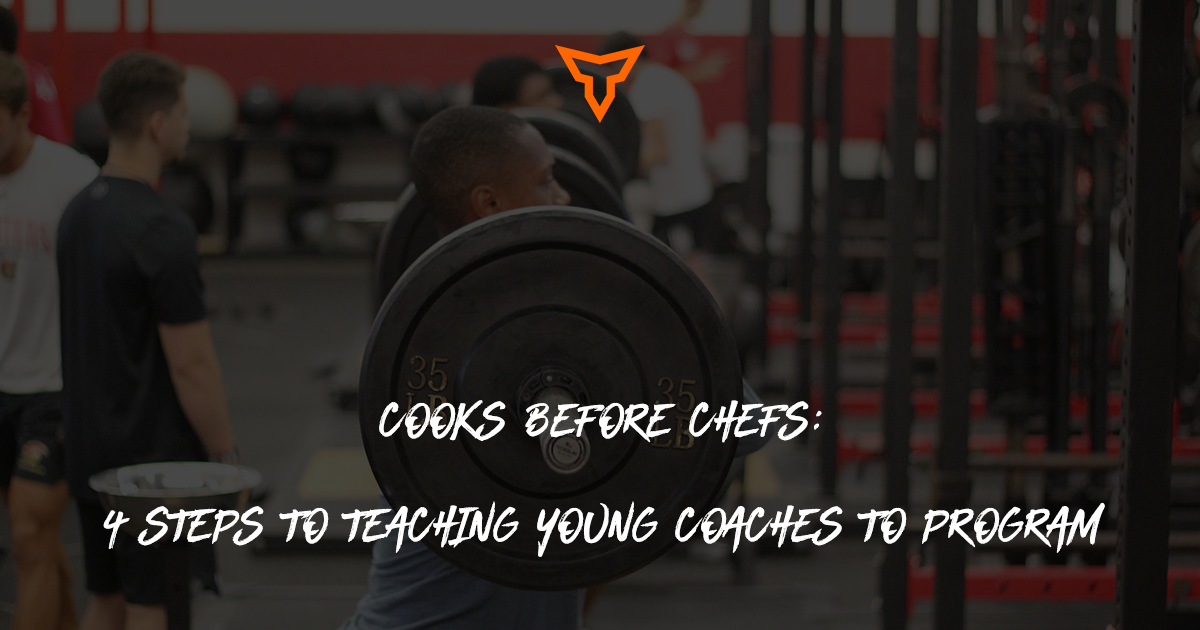Simple Technologies Coaches Can Use to Improve Strength and Conditioning
"Most of the over-hyped revolutions in training technology amount to nothing more than over-priced gimmicks..."
When it comes to training, I love many of the tried and true old-school training methods that have packed strength, power, and size onto athletes for generations. However, I am also committed to always seeking new and better ways of improving athletic performance. In this technological age, the athletic performance industry is bombarded with new “technological breakthroughs” that promise to take your game to the next level. Most of the over-hyped revolutions in training technology amount to nothing more than over-priced gimmicks that waste your money and fail to deliver results. However, over the years of working as a University strength coach, I have found some ways to enhance our athlete training by using certain pieces of coaching technology.
Before I get into these, I have to let you know two things:
1) I don’t sell equipment. I have no financial connections to any of the products you will read about below. Rather, I want to provide you with information in hopes that it will help you or your athlete get better results with your training.
2) I work for a small, private Christian university up in the great white North of Canada. We have a small budget and there are other technological tools out there that are very helpful enhancing athletic training. However, I will stick with what I have personally used and know from real-world experience to help.
While many programs use technology for testing purposes, there are simple technologies coaches can use that I believe will benefit the team in day-to-day training. Here a few technological tools I have found helping in training my athletes.
Video analysis
Enhancing athletic performance can largely be summed up by increasing the amount of force an athlete can put into the ground and the rate at which he/she can apply that force. As a result, I’m a huge fan of squats, deadlifts, Olympic-style weightlifting and explosive lifting variations. The tricky thing with these exercises is that although (if done correctly) they offer tremendous benefits for developing strength and power, they also offer a high risk for injury. As a result, they are extremely coaching-intensive lifts.
One of the fastest ways I have found for improving an athlete’s lifting technique is allow the athlete to see him/herself doing the lift. This way I can explain the form correction while the athlete is watching a video with me and is able to see the technical flaws. This is also helpful for monitoring range of motion. With the squat for example, everyone thinks they are going lower than the really are. When I call an athlete out for a high squat, it is great to be able to show the athlete on video why what they think is full depth is not even close. This also helps prevent making false gains (i.e. increasing weight while simultaneously doing something such as cutting depth and thus not actually getting stronger).
Low-tech video analysis can be done with a simple digital camera or cell phone. You can also get very high tech with a sophisticated program such as dartfish. A simple, inexpensive, yet very effective app for video analysis is called the “Coach's Eye."
Just Jump System
A while back we purchased the Just Jump System. This device calculates vertical jump based on hang-time. While the vertec is still considered the gold standard for vertical jump testing, the Just Jump Mat is quite accurate and extremely fast and easy to use for testing and training. For training, I can quickly run a team through a vertical jump test prior to their regular training session. Regular vertical jump testing allows me to get a base-line measure for each athlete and then track changes throughout a long in-season. Vertical jump is a good indicator of CNS fatigue. By testing athletes prior to training, I can catch fatigued athletes and either send them home or have them do a lighter, recover-focused training session in place of the planned program. I can also see team trends (e.g. the whole team is down) and report this information to the coach. In addition to this, I can be alerted to individuals who are falling behind and know to initiate a discussion on better recovery practices.
Speed Trap Timer
Several years ago we bought a speed trap timer to get an accurate measurement for sprinting and agility testing. However, I have since then seen great value in bringing the timer out for training sessions. Then each set of sprints can be logged in the athlete’s training log the same way reps and sets are. In addition to extra records and progress monitoring, regularly using timers (or jump testers) in training helps to reduce testing anxiety as the athletes become familiar with the devices.
Because few team-sport athletes (at least in Canada) have ever been taught proper sprint mechanics, I often have a lot of coaching work to do. By timing each set of sprints, I can evaluate the effectiveness of a change in sprint mechanics on sprinting speed. For example, often athletes are too tight when they sprint. As a result of this stiffness, they get slower. Telling and athlete to relax (which allows faster movement) can seem counterintuitive. However, when this technique change results in a faster time, the athlete is convinced and will work on making the technique change.
In addition to these benefits, I often use the timer as a way to auto-regulate sprint training. Instead of running a prescribed number of sprints, I have the athlete stop their sprint sets when we see a noticeable a drop in sprinting speed.
In Conclusion
As I mentioned at the beginning, stay true to proven training techniques. However also continually look for new ways to use current coaching technology to enhance a solid training program.
- Andrew Heming
Andrew works at Trinity Western University as the Head Strength & Conditioning Coach of their varsity Spartan Athletic teams. In addition he is a part-time assistant professor in the university’s School of Human Kinetics and publishes a blog at www.AndrewHeming.com.Subscribe to our blog
Subscribe to receive the latest blog posts to your inbox every week.
Related posts

The Switch: Leaving College Strength & Conditioning

Cooks Before Chefs: 4 Steps to Teaching Young Coaches to Program
